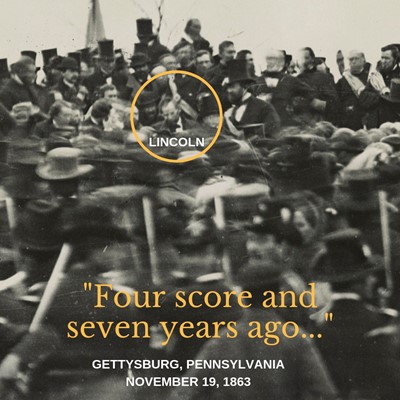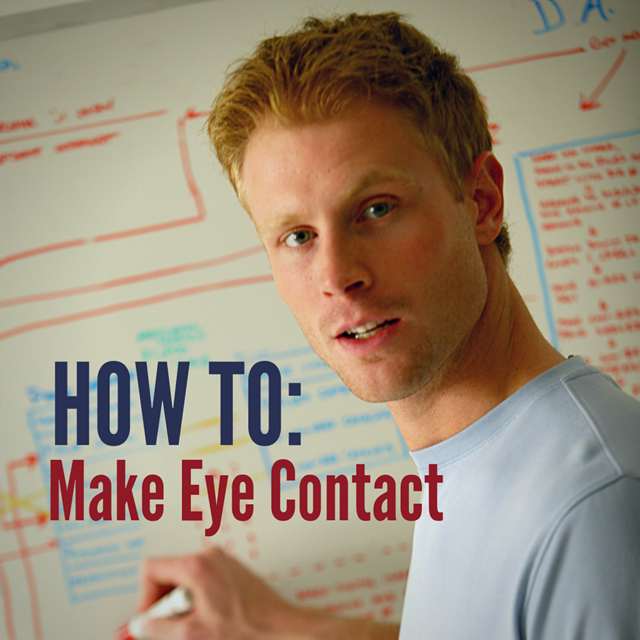
Most people seem convinced that making eye contact with their audience is a good thing.
Nevertheless, university professors at Cornell decided to do some high level research into the power of eye contact. They turned to, who else, Tricks the Trix rabbit. On some cereal boxes, they had Tricks looking away. Silly rabbit. Because the box that sold better was the one on which Tricks looked directly into the eyes of the cereal shopper.
 The Trix rabbit making eye contact with his nose. Photo by Mike Mozart.
The Trix rabbit making eye contact with his nose. Photo by Mike Mozart.
"Making eye contact even with a character on a cereal box inspires powerful feelings of connection," said Cornell professor Brian Wansink.
The same is true for public speaking. Eye contact can build audience rapport and signal the speaker is confident. Yet we know that having an idea that something is good doesn’t always translate into doing it well.
So here's how to make effective eye contact when you speak.
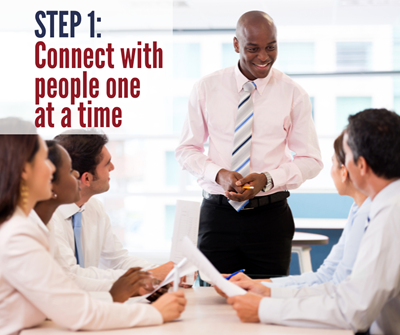
Step 1: Lock in on one person at a time.
Rather than scan the audience like a lawn sprinkler, think of speaking to one person at a time. To accomplish that, you'll have to pick out an audience member, hold eye contact with that person for a few sentences, then move to another person and do the same.
In a small group, you should try to connect with every person. But even if you're speaking to a large crowd, this is effective: Everyone sitting near the person you choose will also feel addressed.
There are multiple benefits to this approach:
- You increase rapport, because audience members feel more connected to you.
- You show your confidence by looking people in the eye (which can be especially useful if you aren't feeling confident).
- You may find that the tone of your voice is more natural, because you're speaking to individuals rather than shouting out to the masses.
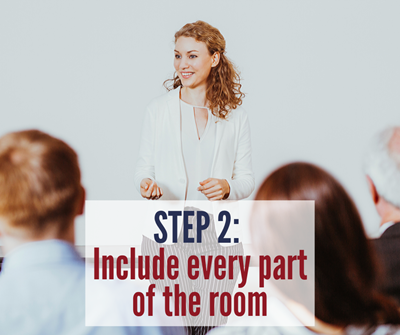
Step 2: Direct eyes equally around the room.
While you're making individualized eye contact, you must also distribute your attention around the room. If you don't, your audience will notice.
Some speakers like to think in terms of zones; perhaps they divide the room into quadrants and find individuals in each. Just be careful not to fall into a pattern and become robotic, moving from Zone 1 to 2 to 3 to 4, then repeating. Audiences will notice that, too.
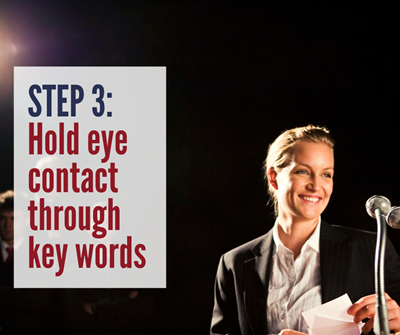
Step 3: Hold eye contact through important words.
Be sure to pay attention to this if you are working from notes or a script, because the speaker's tendency is to look down for what's next before completing the current thought.
Format notes so that you can find your place with confidence. Then hold eye contact through the last key words before you glance down to grab the next idea.
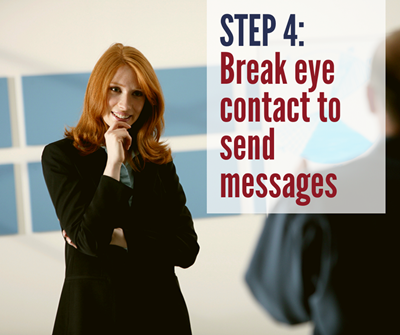
Step 4: Break eye contact to send certain messages.
Do you need to think of the right word--or want to appear you're thinking? It's okay to look up or look away as you do. Or your eye contact might soften as you appear to turn inward and contemplate something emotional.
Just don't disconnect for too long.
And remember that you are sending messages. When you avoid looking at them or when eyes dart around, drift over to a window, or keep shifting to a camera that might be in the room, your audience may take away a message you don't intend to send.
Two more thoughts about the power of individualized eye contact
From our experience, it doesn't hurt to keep these in mind:
- Take care when making strong or negative statements. You might unintentionally appear to be accusing someone of something.
- Prepare yourself for unexpected reactions. Someone may make a funny or disapproving face when you lock in on them, for example. You might want to read it and make adjustments if that person is important…or just ignore it and keep going. Just don't let it derail you.
For more on using eye contact to communicate, you might like this or this.

